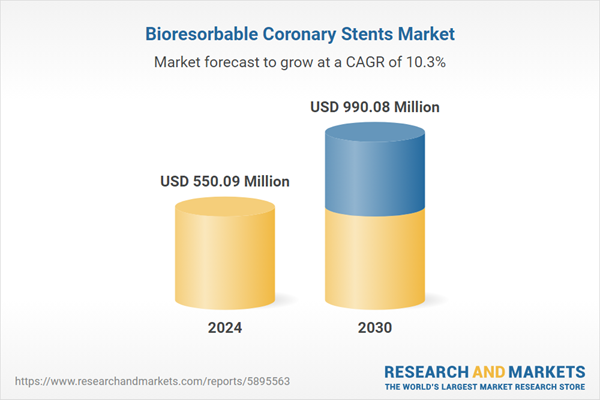Speak directly to the analyst to clarify any post sales queries you may have.
10% Free customizationThis report comes with 10% free customization, enabling you to add data that meets your specific business needs.
Market Drivers
Increasing Prevalence of Cardiovascular Diseases (CVDs)
The growing global incidence of cardiovascular diseases represents a key driver for market expansion. CVDs remain the leading cause of death globally, responsible for 17.9 million deaths in 2019 - approximately 32% of global mortality. Notably, 85% of these fatalities were due to heart attacks and strokes. Furthermore, over 75% of CVD-related deaths occur in low- and middle-income countries, highlighting a critical gap in healthcare infrastructure and access to advanced cardiac care.The rising number of patients diagnosed with coronary artery disease (CAD) has spurred demand for innovative treatment approaches like bioresorbable coronary stents. In 2022, the global prevalence of CAD was estimated at 315 million cases, with a 95% uncertainty range of 273 to 362 million. The age-standardized prevalence rate was recorded at 3,605 per 100,000 individuals, underscoring the widespread nature of the disease.
The aging global population is a significant contributing factor, as age is the most prominent non-modifiable risk factor for CAD and related cardiovascular conditions. According to the American Heart Association (AHA) 2019 update, 31% of men and 25.4% of women aged 80 and above are diagnosed with CAD. In addition, lifestyle factors such as hypertension, diabetes, obesity, and physical inactivity continue to escalate the global burden of cardiovascular risk, further supporting the shift toward bioresorbable stent adoption.
Market Challenges
Efficacy and Safety Concerns
Despite their promising potential, bioresorbable coronary stents face ongoing scrutiny regarding their clinical safety and efficacy. Some trials have raised concerns about the risk of stent thrombosis - the formation of blood clots within or near the stent - leading to potentially life-threatening complications. These concerns have prompted a comparative evaluation against conventional metallic stents, particularly in terms of long-term safety outcomes.Market Trends
Technological Advancements
Rapid innovation in medical technology has significantly influenced the development and adoption of bioresorbable coronary stents. Continuous advancements in material science have enabled the creation of stents that maintain mechanical strength during initial healing phases while degrading safely thereafter. The use of biocompatible materials has improved both patient outcomes and procedural safety.State-of-the-art manufacturing techniques such as 3D printing and laser cutting allow for the production of highly intricate stent designs, optimizing both radial strength and vascular conformability. Many stents are now developed with drug-eluting properties, enabling the controlled release of therapeutic agents to reduce risks of restenosis and inflammation.
Innovations in intravascular imaging technologies, such as intravascular ultrasound (IVUS) and optical coherence tomography (OCT), have further enhanced procedural accuracy by providing high-resolution, real-time visualization of stent deployment. This precision supports optimal placement and expands the therapeutic potential of bioresorbable stents.
Ongoing clinical research and trials continue to refine stent designs and validate long-term outcomes, offering valuable data that guide next-generation product development and regulatory approvals.
Key Market Players
- BIOTRONIK SE & Co. KG
- Meril Life Sciences Pvt. Ltd
- Elixir Medical Corporation.
- Reva Medical, LLC
- Terumo Corporation
- Lepu Medical Technology (Beijing)Co.,Ltd
- MicroPort Scientific Corporation
- LifeTech Scientific Corporation
- Boston Scientific Corporation
- Medtronic plc
Report Scope:
In this report, the Global Bioresorbable Coronary Stents Market has been segmented into the following categories, in addition to the industry trends which have also been detailed below:Bioresorbable Coronary Stents Market, By Brand:
- Magmaris
- Magnitude
- MeRes-100
- DESolve
- Others
Bioresorbable Coronary Stents Market, By End User:
- Hospitals & Clinics
- Ambulatory Care Centers
- Others
Bioresorbable Coronary Stents Market, By Region:
- North America
- United States
- Canada
- Mexico
- Europe
- France
- United Kingdom
- Italy
- Germany
- Spain
- Asia-Pacific
- China
- India
- Japan
- Australia
- South Korea
- South America
- Brazil
- Argentina
- Colombia
- Middle East & Africa
- South Africa
- Saudi Arabia
- UAE
Competitive Landscape
Company Profiles: Detailed analysis of the major companies present in the Global Bioresorbable Coronary Stents Market.Available Customizations:
With the given market data, the publisher offers customizations according to a company's specific needs. The following customization options are available for the report.Company Information
- Detailed analysis and profiling of additional market players (up to five).
This product will be delivered within 1-3 business days.
Table of Contents
Companies Mentioned
- BIOTRONIK SE & Co. KG
- Meril Life Sciences Pvt. Ltd
- Elixir Medical Corporation.
- Reva Medical, LLC
- Terumo Corporation
- Lepu Medical Technology (Beijing)Co.,Ltd
- MicroPort Scientific Corporation
- LifeTech Scientific Corporation
- Boston Scientific Corporation
- Medtronic plc
Table Information
| Report Attribute | Details |
|---|---|
| No. of Pages | 182 |
| Published | April 2025 |
| Forecast Period | 2024 - 2030 |
| Estimated Market Value ( USD | $ 550.09 Million |
| Forecasted Market Value ( USD | $ 990.08 Million |
| Compound Annual Growth Rate | 10.2% |
| Regions Covered | Global |
| No. of Companies Mentioned | 10 |









